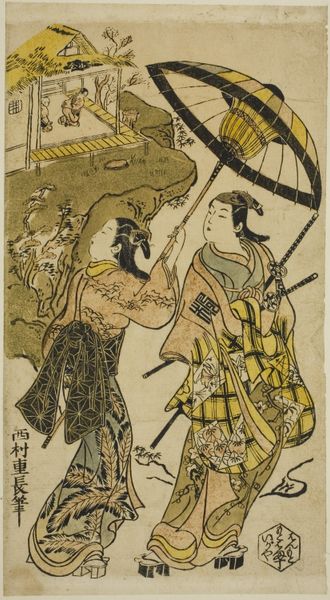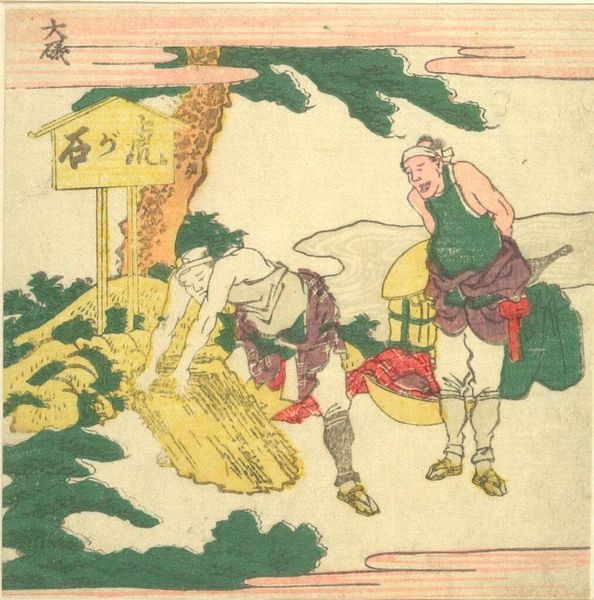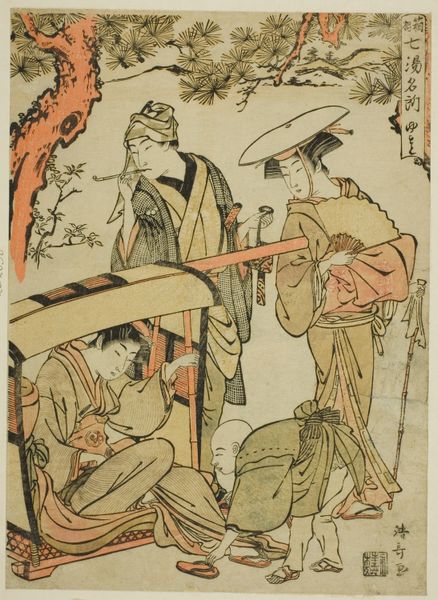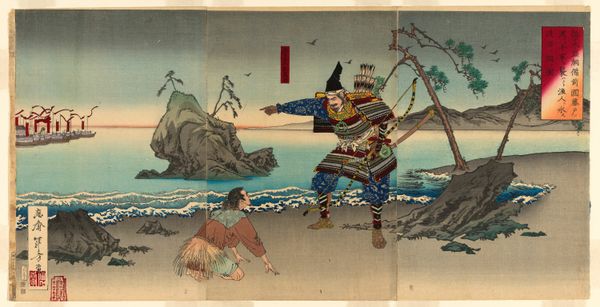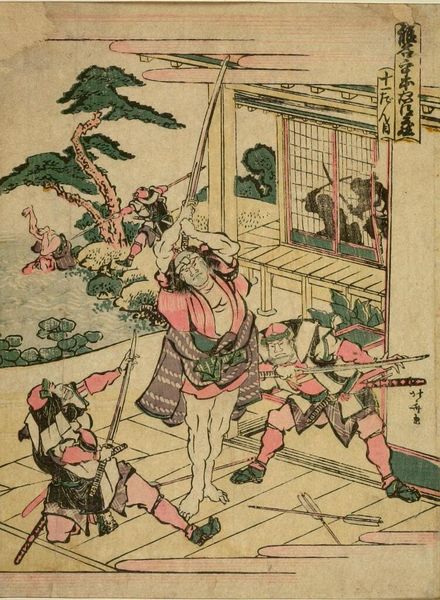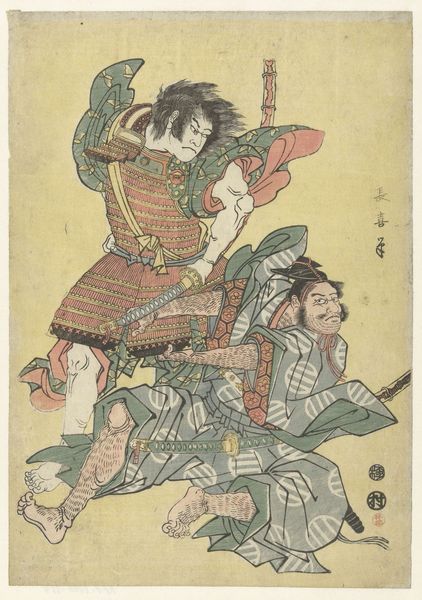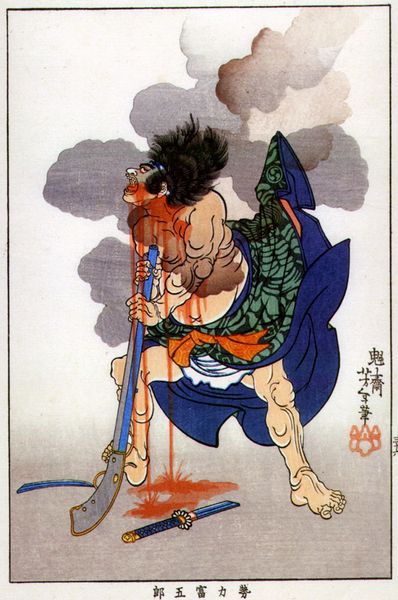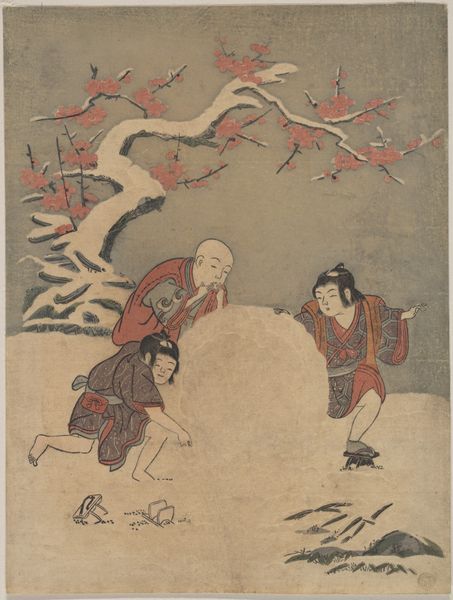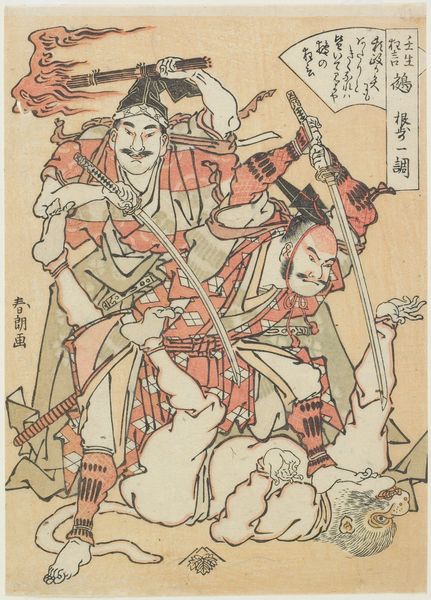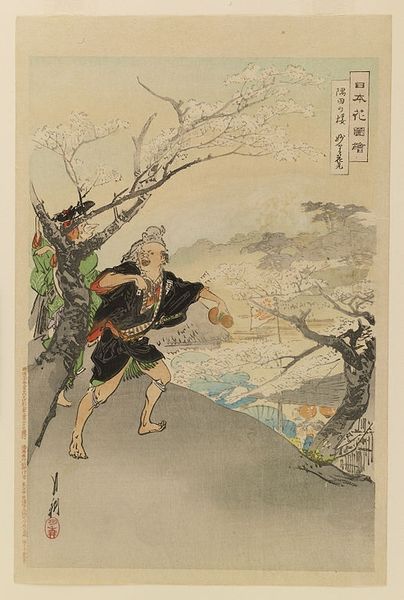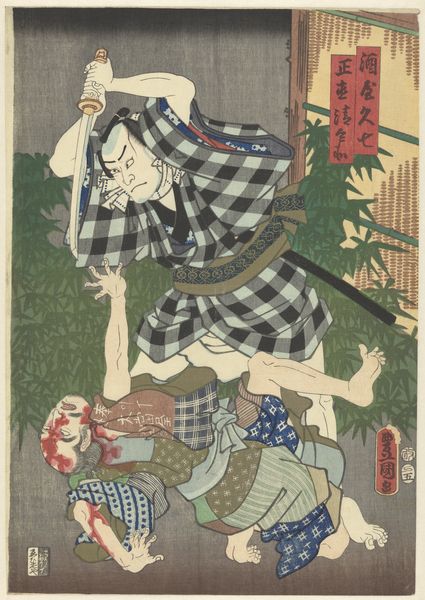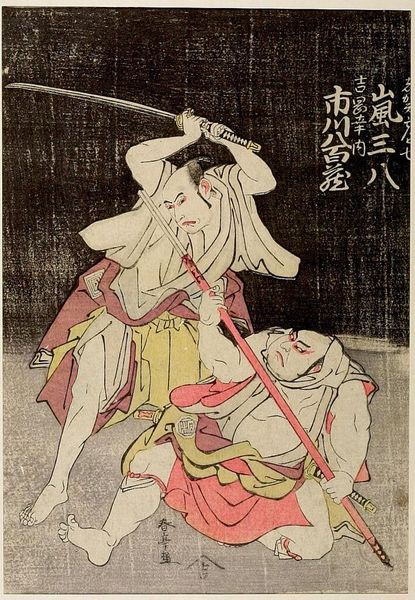
Copyright: Public Domain: Artvee
Curator: Looking at "Tadamori and the Oil Thief" by Tsukioka Yoshitoshi, made in 1882, one is immediately struck by the chaotic energy rendered in this woodblock print. Editor: It's unsettling. There’s a spectral figure, almost inhuman in its leanness and those unnerving straw-like protrusions from its head, juxtaposed with what appears to be an enraged warrior. It really evokes a sense of fear and unease. Curator: The composition certainly contributes to that. Note how Yoshitoshi employs stark contrasts—the dark figure on the left, balanced by the brightly attired warrior mid-leap on the right. It creates a dynamic tension across the picture plane. And consider the masterful lines defining musculature and the intricate patterns adorning the warrior's garments. Editor: The title helps clarify some of the imagery for sure, but even then, there's this inherent power dynamic here. The figure designated as the ‘thief,’ skeletal and bent, seems to represent a marginalized individual driven to theft—presumably of valuable oil—perhaps out of necessity. Then we have Tadamori, representing the establishment, responding with disproportionate aggression. Curator: I find it more interesting to consider that the warrior’s exaggerated reaction elevates a mundane scenario into a tale of exaggerated moral panic, not of realistic social analysis. Editor: But can we really separate this from the historical realities Yoshitoshi and his viewers inhabited? There are long traditions of peasants rebelling and resisting, especially if it involved oil theft. Curator: Such interpretations are valid, but the formal harmony here suggests to me that Yoshitoshi's interest was in pictorial composition, with its subtle variations in line and its sophisticated organization of color, rather than specific social commentary. The emotional intensity comes more directly from the print's formal structure and the dramatic use of space and line than from overt sociopolitical allusions. Editor: Still, I feel one has to acknowledge that the historical milieu deeply shapes both the production and reception of art, imbuing seemingly benign narratives with deeper layers of meaning about power, injustice, and resistance. It offers a compelling viewpoint on marginalized peoples fighting for survival against authority. Curator: Indeed, and what is exciting about this print, made with woodblocks, is the multiplicity of perspectives from which to examine it! Editor: Precisely—layers to appreciate beyond just aesthetics.
Comments
No comments
Be the first to comment and join the conversation on the ultimate creative platform.
